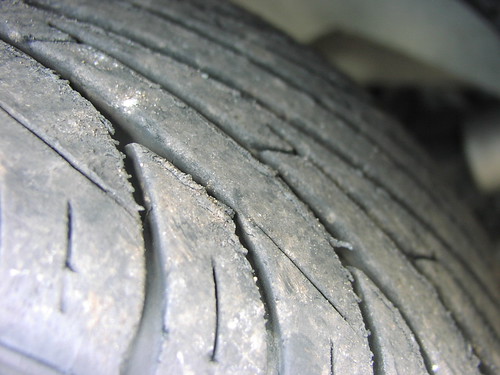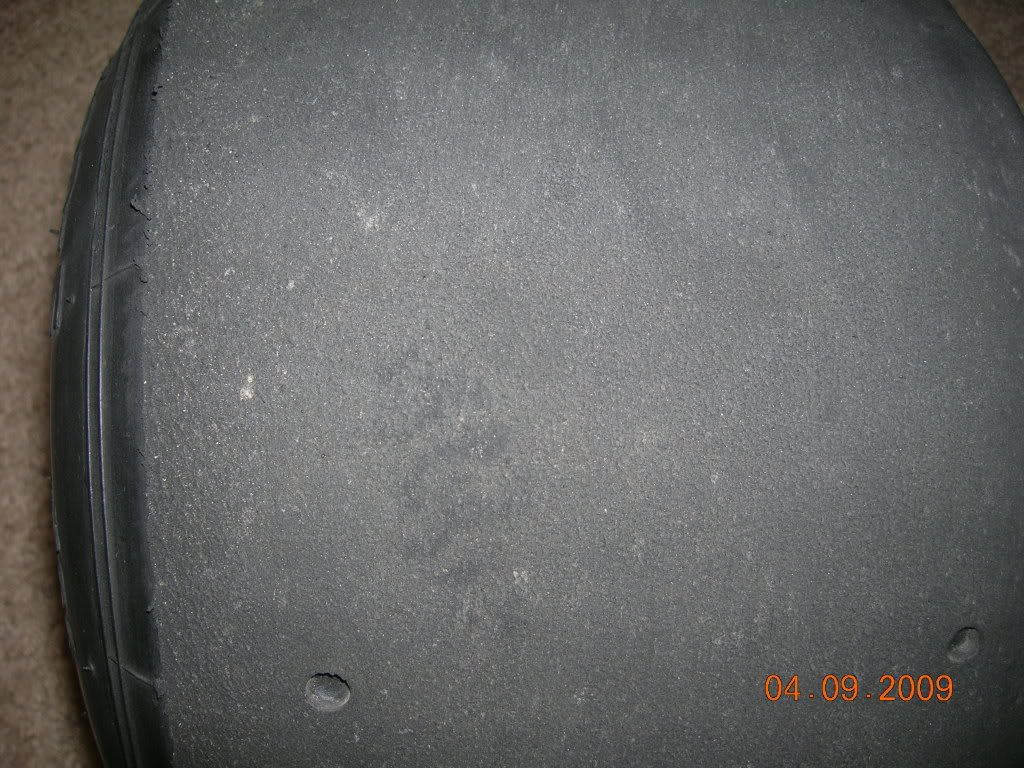Jersey Tom wrote:I've met Paul.. and I've seen the book. Still not graining

But I'm not sure if I can get into what it is. His book isn't bad, but take a lot of it with a grain of salt.
The spacing and regularity of those "grooves" are what gives it away. Plus you can see the rubber between them looks pretty much just fine.
Regarding what graining is.. I think of it as exceeding the tear strength of the material. Overstressing and abrading it and tearing it up. Can happen cold ("cold tearing") or hot ("graining") depending on the material properties.
Well, if you don't believe "Paul", perhaps you'll believe Bridgestone:
Tyre graining happens when the side-forces on the tyre cause the surface rubber to roll up and present a non-uniform contact patch with the road, which affects the grip level.”
Interview with Hirohide Hamashima, Bridgestone Motorsport Director of Motorsport Tyre Development
Another example, light graining around the grooves. You can notice the jagged edges of rubber where it rolled up:

Now, is Mr. Hamashima also wrong?

About the picture by Birel,I don't think underinflation is the cause: normally is high pressure what causes graining.
Maybe you're lifting too much the inner rear wheel. Kart tyres, unlike car tyres, do not react well to large angles of attack. If you lift too much the rear inner wheel, you're pushing too hard the front ones. Normally, this happens when the chassis is too flexible. Perhaps you could try to use spacers to widen the rear track (move the rear hubs outward) and make harder to lift the rear, or you could reduce caster (but, as you probably know, that caster reduction would affect the initial turn in).
Another reason could be the track. If most of it is high speed, but it has a slow part, that could be it: you're arriving with cool (relatively speaking) tyres to a demanding location. Think of heating the tyres a bit before the slow corners.



But I'm not sure if I can get into what it is. His book isn't bad, but take a lot of it with a grain of salt.

